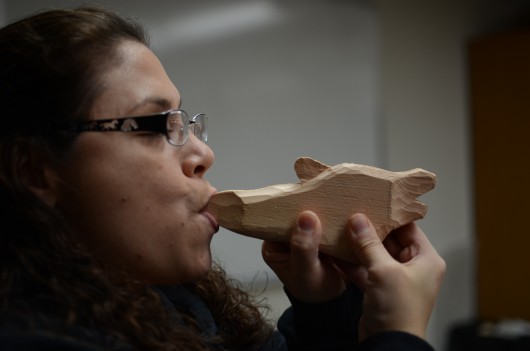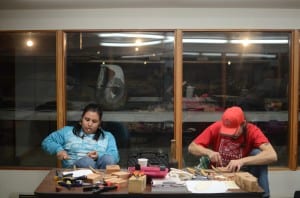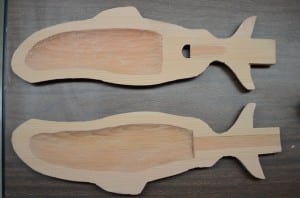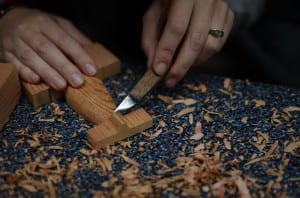Whistles, rattles and clappers have traditionally been an important part of Native culture in Southeast Alaska, but the instruments are less common now. Working with the Smithsonian Institute’s Arctic Studies Center, the Totem Heritage Center hosted a whistle making workshop this month.
About 10 students sit surrounded by cedar shavings after two days of carving.
Instructor John Hudson has been carving for more than 30 years, but made his first cedar wind instrument about seven years ago. At the time ,he didn’t know anyone making them.
“You don’t really see a lot of people using them now, and you don’t really see them out in the forefront now.”
However when he had the chance to look through the Smithsonian archives in Maryland he saw quite a different picture. “I was kind of shocked that there were hundreds and hundreds of examples of whistles and reed instruments. I had the opportunity to look at them and shine lights in them. Kind of see how they worked, and we even X-rayed some.”
After he understood how they worked, he started carving his own and teaching others to do the same. The traditional uses for wind instruments are varied. Some were for personal ritual, anthropologists documented some were used to represent supernatural events, and many were carved in the form of salmon and halibut to call the fish spirits for a bountiful catch.
“There’s lots of reasons and I don’t quite understand all of them. We might want to take some of these things and kind of make it more relevant to us today and come up with our own reasons for using some of these things.”
Longtime pilot Eddie Clark carved a detailed de Havilland Beaver whistle.
Ellen Carrlee carved a seal whistle.“ And then I’m going to try to figure out what his insides look like and make a map of that with paint on his tummy because I’m doing research on gut skin.”
For Tara Roberts, the idea to carve a howling wolf came quickly. Her sweatshirt says “Wolves make me happy. You not so much.”
“I love wolves. I worked in wolf sanctuary and also my clan is the wolf.” She was also working on a second whistle, a heart for her daughter. “Oh I’m getting noise. At least I’m hearing something.”
The whistles each started as a block of cedar. After the students chose a shape, the wood was split in half, and students used carving tools to hollow two inner chambers on each half and shape the outer design. The deeper the air chamber, the deeper the sound.
Then, an opening to blow into, and above the hollow chamber: a slit. So when someone blows, the air is forced through, creating a sound.
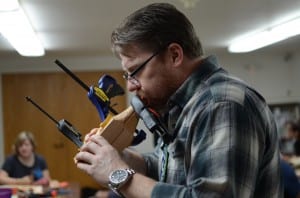
Instructor John Hudson tests a whistle at a whistle making workshop on November 8, 2015. Photo by Samuel Wilson.
Traditionally the two pieces were tied together with spruce roots, but today the students are use wood glue.
The workshop was a part of a week-long residency program in Anchorage, but Hudson was glad this portion was in Southeast. “ They thought that since these traditions were from the Southeast area of Alaska that it would be fun to bring it here and I’m right over in Metlakatla, so it’s been really cool doing it here in Ketchikan.”
While a weekend workshop alone can’t bring the whistle back into prominence, there are now a dozen or so new cedar whistles in Southeast, each with an individual intention and unique sound.

